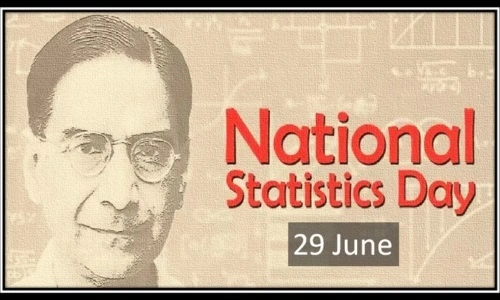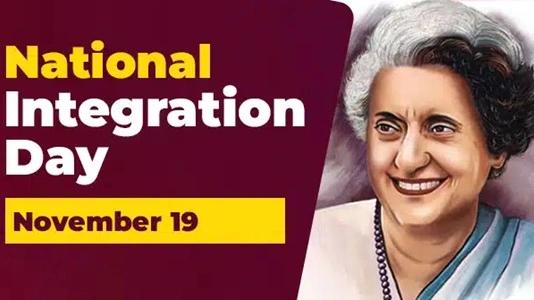ndia has a rich history of using statistics for planning and policy-making, a tradition that has played a vital role in the nation’s development. To honor the contributions of statistics to India’s progress and to celebrate the legacy of one of the greatest statisticians of the country, National Statistics Day is observed annually on June 29. This day is dedicated to the importance of statistics in socio-economic planning and recognizes the contributions of Prof. Prasanta Chandra Mahalanobis, the “Father of Indian Statistics.”
As of 2025, National Statistics Day continues to serve as a reminder of the critical role that statistics play in shaping the nation’s future. Let’s dive deeper into the history, significance, themes, and celebrations of this day.
Why is National Statistics Day Celebrated?

National Statistics Day is celebrated to acknowledge the immense value of statistical data in governance, policymaking, and development. It also commemorates the birth anniversary of Prof. P.C. Mahalanobis, a visionary statistician and mathematician who laid the foundation for modern statistics in India.
Who was P.C. Mahalanobis?
Born on June 29, 1893, in Kolkata, Prasanta Chandra Mahalanobis was a pioneer in the field of statistics. He is best known for:
1. The Mahalanobis Distance: A statistical measure used in pattern recognition and classification.
2. The Second Five-Year Plan: He played a pivotal role in formulating India’s second Five-Year Plan, which emphasized industrialization and economic growth.
3. Indian Statistical Institute (ISI): He founded the ISI in Kolkata in 1931, which remains a premier institution for statistical research and education.
His contributions have had a lasting impact on statistics, both in India and internationally.
The Objectives of National Statistics Day
1. Raise Awareness: To spread awareness about the importance of statistics in daily life, governance, and policy formulation.
2. Recognize Contributions: To honor the contributions of statisticians like P.C. Mahalanobis and inspire young minds to take up careers in statistics.
3. Promote Data-Driven Decision Making: To emphasize the role of statistical tools and techniques in solving real-world problems and achieving sustainable development.
Themes of National Statistics Day
Each year, National Statistics Day is celebrated with a specific theme that focuses on contemporary issues where statistical insights can drive impactful solutions.
Recent themes include:
- 2021: “End Hunger, Achieve Food Security and Improved Nutrition and Promote Sustainable Agriculture” (aligned with SDG 2).
- 2022: “Data for Sustainable Development.”
- 2023: “Statistical Awareness and Public Participation.”
- 2024: “Harnessing Statistics for Climate Action.”
- 2025: “Bridging the Data Divide: Empowering Local Governance through Statistics.”
The theme for 2025 highlights the importance of using statistical data to strengthen governance at the grassroots level, aligning with India’s focus on decentralized development.
How is National Statistics Day Celebrated?
National Statistics Day is marked by events and activities organized by government bodies, academic institutions, and statistical organizations. The key highlights of the celebrations include:
1. Lectures and Seminars: Experts from the fields of statistics, economics, and policy-making deliver lectures on the significance of statistics in addressing current challenges like climate change, poverty, and education.
2. Workshops and Training Sessions: Workshops are conducted to train students and young professionals in advanced statistical tools and techniques, including machine learning and big data analytics.
3. Competitions for Students: To encourage participation from the youth, events such as quizzes, essay writing, and poster-making competitions are organized in schools and colleges.
4. Awards and Recognition: The Prof. P.C. Mahalanobis National Award is presented to individuals who have made outstanding contributions to the field of statistics.
5. Awareness Campaigns: Government agencies and non-profit organizations run campaigns to educate the public on how statistics can improve everyday decision-making and enhance the quality of life.
Role of Statistics in India’s Development
India’s journey as a developing nation has been heavily reliant on statistical data. From agriculture to industry, healthcare to education, statistics have been instrumental in shaping policies and monitoring progress.
1. Economic Planning:
Statistical data has been the backbone of India’s Five-Year Plans, guiding investments and resource allocation.
2. Census and Surveys:
The Census of India, conducted every ten years, provides crucial demographic data for planning public services like healthcare, education, and transportation.
3. Agriculture:
Statistics help monitor crop production, rainfall patterns, and soil quality, enabling farmers to make informed decisions.
4. Poverty Alleviation:
Programs like MGNREGA (Mahatma Gandhi National Rural Employment Guarantee Act) rely on statistical data to identify target beneficiaries and measure impact.
5. Public Health:
Data-driven approaches are used to track disease outbreaks, allocate healthcare resources, and monitor the performance of schemes like Ayushman Bharat.
6. Education and Employment:
The National Sample Survey (NSS) collects data on literacy, employment, and household income, shaping policies for inclusive growth.
Challenges in Statistical Development
While India has made significant progress in leveraging statistics, there are several challenges that need to be addressed:
1. Data Gaps: Lack of reliable data in remote areas creates barriers to effective planning.
2. Capacity Building: There is a need to train more professionals in modern statistical techniques and data analysis.
3. Digital Divide: Unequal access to technology affects the collection and dissemination of data in rural areas.
4. Privacy Concerns: As data collection becomes more digitized, concerns around data privacy and security are growing.
5. Timeliness of Data: Delays in data collection and analysis can reduce its relevance and impact.
Future of Statistics in India
As India moves towards becoming a $5 trillion economy, the role of statistics will become even more critical. Emerging technologies like artificial intelligence (AI), machine learning (ML), and big data analytics are expected to revolutionize the way statistical data is collected, analyzed, and applied.
1. Smart Governance:
Real-time data analytics can improve public service delivery and urban planning in India’s growing smart cities.
2. Climate Action:
Statistical modeling can help predict weather patterns, assess environmental risks, and guide climate adaptation strategies.
3. Healthcare Innovation:
Big data in healthcare can lead to breakthroughs in personalized medicine and epidemic control.
4. Economic Forecasting:
Advanced statistical tools can provide more accurate economic forecasts, helping policymakers make informed decisions.
5. Strengthening Local Governance:
Decentralized statistical systems can empower Panchayati Raj institutions to address local issues effectively.
Conclusion
National Statistics Day is not just a day of celebration but a call to action for India to harness the power of data and statistics for sustainable development. It serves as a tribute to the visionary contributions of Prof. P.C. Mahalanobis and a reminder of the pivotal role statistics play in shaping India’s future.
As we celebrate this day on June 29, let us recognize the importance of fostering a culture of data-driven decision-making at every level of society. Whether it’s addressing climate change, improving healthcare, or achieving economic growth, statistics will continue to be the guiding force behind India’s progress.
By addressing challenges, embracing innovation, and investing in statistical education, India can unlock the full potential of its data resources, ensuring a brighter and more equitable future for all.

